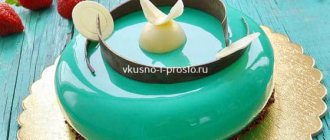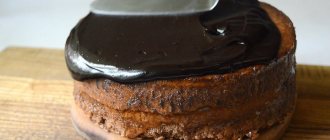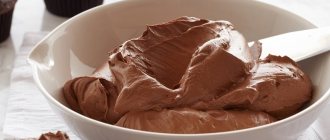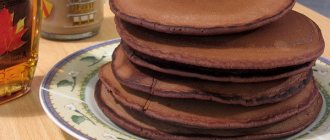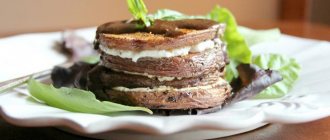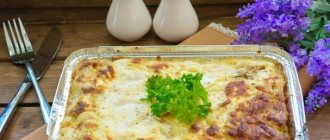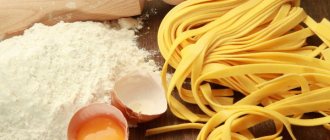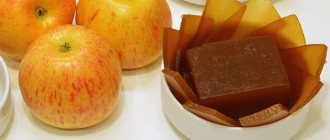You've probably noticed that before Easter, a huge number of Easter cakes with snow-white icing appear in stores. They are brightly decorated with sprinkles and culinary figurines made of mastic. But sometimes such beauty is even difficult to bring home.
Caps made from whipped egg white tend to stick to your hands or the packaging bag. And after a few days, the protein dries out and when cutting the “Easter” into pieces, it simply crumbles. The same thing happens when we decorate Easter at home.
The question involuntarily arises: how to make glaze that does not crumble or stick? I have already told you about several options for coating Easter baked goods. Maybe you can choose something from the previous article. Along the way, look for new ideas on how and with what to paint eggs. And several options for traditional painting with onion peels.
And today we continue the topic of covering Easter cakes with glaze. I offer you a large selection in which you will find the recipe you need. Here, there is a classic version made from protein and new ideas with gelatin and agar-agar, which do not stick to your hands and do not crumble. Or good solutions with marshmallows that also don’t crumble. In general, choose!
Frosting for Easter cakes that does not crumble or stick
First of all, I want to introduce you to the simplest recipe. It literally cooks in 5 minutes. And you don’t need to cook or beat anything. But the result is simply wonderful. After drying, the white cap becomes glossy, but it does not stick or crumble.
Multi-colored sprinkles adhere perfectly to it, which is also of great importance. When you press the glaze with your finger, it resembles a rubber coating - soft and elastic. Quickly restores its shape.
What you will need:
- 4 tbsp. l. milk powder;
- 6-8 tbsp. l. condensed milk;
- 2 tsp. lemon juice;
Preparation:
Step 1. Place 4 tablespoons of powdered milk in a bowl. Add condensed milk.
Step 2. Squeeze 2 teaspoons of lemon juice. Immediately strain it through a strainer so that no seeds or pulp get in. Place the juice in a bowl with milk. Mix.
If the mass turns out to be too thick, then add more condensed milk. If it’s too liquid, then it’s dry.
Step 3. Grease the tops of the Easter cakes with the prepared fondant. Sprinkle with colored sprinkles and wait for it to dry.
The mass spreads easily. The layer turns out to be thick and does not shine through. Until it dries, it flows down and forms beautiful smudges. The thicker the fondant is spread, the longer it will take to dry.
How to make icing for Easter cake so it doesn't crumble
This glaze with gelatin and lemon juice will never crumble in your baked goods. And when cut, it remains smooth without any cracks. For these qualities, as well as for its pleasant sour-sweet taste, many chefs love it.
It is important to know that our ideal fondant dries very quickly and will not wait for you to bake your products. Therefore, before you start preparing it, the pasochki must already be baked and cooled.
I also recommend buying fresh gelatin rather than using last year’s. Then he behaves as we need.
We need:
- Water - 6 tbsp. spoon;
- Gelatin - 1 teaspoon;
- Sugar - 200 grams;
- Lemon juice - 7-8 drops.
Preparation:
1. Pour gelatin with 2 tablespoons of cool water and set aside to swell.
2. While it is swelling there, pour all the sugar into a small saucepan and fill it with the remaining water. Stir the mixture until all the sugar is wet. You may want to add more water, but it's better not to - this amount is quite enough.
3. Place the saucepan on low heat and cook, stirring continuously. We need to cook sugar syrup. When it is all dissolved, the syrup is ready.
4. Cool it for no more than 5-6 minutes and immediately add the swollen gelatin. Stir quickly until the mixture becomes viscous.
5. Take out the mixer and start whipping the syrup at the highest speed. It should turn white in just three minutes.
6. Now add 7-8 drops of lemon juice, continuing to beat the mass. If you want it sour, pour more. And also, if desired, you can add 1-2 tablespoons of cocoa powder and then the glaze will turn out chocolate.
7. In 20 minutes the fondant can completely harden. Therefore, without delay, let's start covering. To do this, dip the Easter cakes directly into the saucepan and turn them in a circle. Do everything carefully, trying not to drown all the baked goods.
Well, after 15-20 minutes the Easter baked goods can be served.
The Easter cakes turned out to be a sight to behold under the fluffy snow-white cap. We eat with pleasure!
White glaze with gelatin without eggs
The coating in this version of the “paska” contains gelatin and is prepared without proteins. White jelly on Easter baking is perhaps the best solution. A delicate mass - instead of a crumbling white crust. It adheres softly to the surface. When coated, it forms beautiful smudges on the side surface. Holds culinary decorations well. You just need to stir them onto the cap before it dries.
The soft, viscous mass tastes like jelly candies. Very elastic. And its main advantage is that it does not crumble under the blade of a knife. Easter baked goods in white jelly hats look impeccable.
Ingredients:
- 100 g of powdered sugar or sugar;
- 2 tbsp. l. water;
- 1 g. vanillin;
For the gelling agent:
- 1 tsp. gelatin;
- 2 tbsp. l. water;
Preparation:
1. Pour a teaspoon of gelatin with two tablespoons of cold water. Mix well and leave for a while so that the substance softens and swells. Pour powdered sugar and vanillin into a saucepan. Add water and mix.
2. Place the saucepan on the fire. With constant stirring, bring the mixture to a boil. As soon as it boils, remove it from the stove and add well-swollen gelatin. Stir the mixture until the gelatin is completely dissolved.
3. Now, beat the mixture of sugar and gelatin with a mixer until strong white foam.
We whisk immediately, while the mixture is still warm and the gelatin has not yet hardened.
This procedure takes less than 5 minutes.
4. As soon as you feel that the mass begins to thicken, the glaze is ready. It turns out glossy and snow-white.
To prevent the glaze from hardening in the saucepan, place it in a pan of hot water.
5. The consistency of it resembles thick sour cream.
Apply fondant to Easter cakes. To do this, you can use a spatula or a brush. Immediately sprinkle with confectionery sprinkles. So that it has time to attach to the liquid glaze before it hardens.
Recipe for the perfect starch-based glaze without eggs
Today we are going to make some fudge from our childhood. Why from childhood? Surely you remember delicious gingerbread cookies with amazing white, chocolate and even pink glaze. That glaze was just perfect, it didn’t drip or stick to the handles after it hardened.
So let's remind you of childhood emotions today. By the way, in this method we will do without eggs. And you know, even without eggs this glaze will turn out shiny, smooth and incredibly delicious. And yes, such a coating is prepared not only for Easter cakes, but also for cakes, pies, muffins, gingerbread cookies, if you bake them at home, and homemade cookies.
We prepare the following elements:
- Starch – 10 g;
- Milk – 4 tsp;
- Unscented sunflower oil – 1 tsp;
- Powdered sugar – 150 gr.
Let's proceed to the next steps:
- Sift all the loose dry elements through a sieve and mix thoroughly with a kitchen spatula or spoon.
- Pour milk into the dry mixture (the milk should not be cold, so I recommend removing it from the refrigerator several hours before preparing it), and mix thoroughly. Mix the entire mixture to obtain a uniform mass.
- Add vegetable oil to this liquid consistency, stir the liquid mixture until the oily streaks disappear and until you get a uniform, viscous, thick consistency. It is important that you get a thick mixture that will flow more viscously.
- Once the glaze is ready, beautifully brush the cake with a spatula, or simply dip the bread into the mixture. If you want to further decorate it, do it immediately until the coating begins to dry, otherwise everything will fall off. The fondant itself will harden for no more than forty minutes. Once it hardens, you can start cutting.
Lemon fudge with gelatin without proteins
Another type of fondant for coating baked goods. It is, like the previous one, using gelatin. Only this composition contains citric acid. Its advantage is that it does not contain proteins. Therefore, it does not dry out into a brittle crust and does not crumble when cut.
Its composition resembles chewing candies. The tasty, soft and elastic structure looks beautiful on baked goods. It holds jewelry well if applied while the mixture is still wet.
Ingredients:
- 1 tsp. gelatin + 2 tbsp. l. water;
- 180 g sugar;
- 4 tbsp. l. water;
- 1 tsp. lemon juice;
How to cook:
Pour water into a bowl and add gelatin to swell, this will take 15-20 minutes. Pour water into the ladle and add sugar. Cook the syrup while stirring. As soon as it boils, immediately remove from heat.
Add the swollen gelatin to the syrup. Stir it well until it is completely dissolved.
Beat the hot mixture with a mixer until the desired thickness is formed. Add lemon juice and continue the process.
Lemon juice helps maintain the volume of the mass. Increases the thickness of the fondant.
The longer the mixer runs, the thicker the cream becomes. This takes about 5 minutes.
Apply a creamy consistency to the tops of the Easter cakes. You can make smudges or just apply it with a cap. Do as you please. And don’t forget to immediately decorate with sprinkles before the hat hardens.
Lemon glaze for Easter cakes
This is the easiest way to make glaze. There is no need to cook or beat anything. No eggs or gelatin are used. You only need two components! The result is a white glaze.
Ingredients:
- powdered sugar - 200 gr.
- juice of half a lemon
Preparation:
1. Making icing sugar is incredibly simple. Squeeze the juice of half a lemon into the powdered sugar and stir with a spoon until smooth. That's all! The result is a white, thick, stretchy mass. Lemon will help the sugar dry well on the cake.
2. Apply this fondant to warm Easter cakes, then the temperature will spread and even out beautifully. This is how easy it is to make frosting with just two ingredients.
Easter icing that doesn't crumble or fall off
In my opinion, this is the best type of glaze. Soft, tender. She does not reach for the knife at all when cutting. We visually see that the products are covered with a cap, but the knife does not feel it. It's as if there is nothing above.
And all because it contains marshmallows. The candy's structure resembles a porous soufflé. They are made from syrup, starch and gelatin. When combined with whipped egg whites, the result is an unusually soft, airy mass.
Ingredients:
- 1 egg white (40 g);
- 40 g marshmallows;
- 80 g sugar;
Preparation:
Combine granulated sugar with protein. Place the bowl in a water bath and, while stirring, bring the mixture until the sugar is completely dissolved. It turns out viscous, similar to glue.
Now, beat this mass with a mixer until thick. In this case, the bowl should be in a water bath. Then remove it from the water bath and continue working until a clear pattern appears.
How to determine whether the egg white is whipped correctly? When turning the bowl over, it should not fall out. When grabbed with a spatula, it does not slide off.
Melt the marshmallows in the microwave or in a water bath to allow the candies to swell. We send them to a bowl with protein. Mix by hand with a spatula. The result is a viscous, fluffy mass that holds its shape well.
Spread the creamy mass onto the pasochki and decorate the top with baskets made of mastic.
The cake itself can be wrapped in bright paper and tied with a ribbon.
The first recipe. Protein glaze for Easter cake: classic option
White icing for Easter cakes based on chicken eggs is considered traditional, especially since it is not very difficult to prepare. You will need:
- Egg white – 1 pc.
- Fine granulated sugar – ½ cup
- Water – ½ cup
This eggnog for Easter cake is prepared as follows: water is poured into a saucepan, sand is added, and this mixture is cooked with constant stirring. Cook the sugar icing for the Easter cake, first over low and then over higher heat until the water has evaporated and the mixture turns into a thick syrup. After this, beat the egg whites and, while continuing to beat them, gradually pour a thin stream of the prepared syrup into the protein mass. Continuing to beat the resulting mixture until smooth. If necessary, double the amount of all ingredients.
Note to the owner. To determine the degree of readiness of the sugar syrup, scoop a little of the boiling mixture with a teaspoon and drop it into cold water: if you can roll the cooled syrup into a ball, it can be considered ready.
The following video presents another version of the recipe for a classic, thick and dense snow-white glaze for Easter cake:
How to Make Fudge with Powdered Sugar and Lemon Juice
This recipe for coating baked goods has been used for a long time and is a classic option. The fondant is convenient because when it hardens, it remains soft. Does not crumble under a knife blade.
Keep this type of baking coating in your piggy bank. After all, it can be done literally in a matter of minutes. If you grate the lemon zest it will take a little longer. And when using one juice, you just need to mix it with powder and that’s it. The fondant is ready. And she also looks beautiful and elegant. It has a pleasant sweet and sour taste.
What is necessary:
- 150 g powdered sugar;
- juice of one lemon or lime;
- lemon zest (if desired);
Preparation:
Remove the zest from the lemon or lime using a fine grater. We send it to powdered sugar. Squeeze the juice from the lemon and add to the powder. Mix everything well.
Apply lemon fudge to the tops of the cakes. If desired, the glaze can be tinted with beet juice or turmeric. If it has a runny consistency, add more sugar to it.
Sugar icing without eggs
Here’s another interesting recipe without cooking, incredibly simple, no need to heat or beat anything. On finished products, this fondant does not crumble at all, which is also a plus.
Its color is translucent, it drips beautifully from the baked goods and hardens. An interesting point is that the sprinkles stick to it very tightly and do not come off.
Maybe someone will like this option. I liked it for its ease of preparation and the fact that it does not crumble.
Ingredients:
- 150 g powdered sugar
- 1 tsp. starch
- 20 ml hot water or milk
- 1 tsp. vegetable oil
Sift the powder into a cup and add a spoonful of starch to it. You can take any, corn or potato.
Let's stir.
Add hot water or milk. If you take milk, the color will be whiter and denser than that of water.
But it must be hot. Mix vigorously until smooth.
While kneading, add another spoonful of vegetable oil. It will give a beautiful pearlescent shine.
Stir thoroughly again and you're done!
You won’t be able to apply it nicely and evenly with a brush or spatula; I recommend dipping the finished, cooled cakes into it.
Then the coating turns out even and flows beautifully.
It hardens quickly, so immediately sprinkle with confectionery sprinkles, do not put it off until later.
This is how simple and easy it is to make a great glaze.
It is suitable for any baked goods - cupcakes, baba, etc. Good, I like it!
Recipe for thick sugar glaze for Easter cakes
This version of fudge is also simple and affordable. Instead of lemon juice, you can use acetic acid or malic acid. They prevent sugar from turning into a hard, brittle crust. But the syrup, when mixed with water, must be boiled.
When hardened, the fondant remains soft. This allows you to apply it to any sweet baked goods. Whether it's gingerbread, bun or Easter. Quickly and without unnecessary hassles, we get an excellent option for confectionery coating.
Ingredients:
- 1 tbsp. Sahara;
- 0.5 tbsp. water;
- 1 tsp. vinegar (9%);
Preparation:
Pour a glass of sugar into the pan. Pour water, mix and put on fire.
We will boil the mixture over low heat, with constant stirring.
Be sure to cover with a lid and simmer over low heat for 9-10 minutes. Water condensation from the lid flows down the walls of the pan, so the walls remain clean. Sugar does not crystallize on them.
How to check if the fudge is ready? They check her for a ball. To do this, take a small amount of boiling syrup into a tablespoon. Place it in a bowl of cold water. And, as soon as it cools down a little (so as not to burn your finger), right in the water, we begin to collect the syrup into a ball. If it comes together, then the fudge is ready.
Add vinegar to boiling sugar, let sit for a few more seconds and remove from heat. Place the pan in a bowl of cold water.
Sugar syrup on top, lightly sprinkle with cold water. It will not form crystals when whipped.
Beat with a mixer until a white viscous mass forms. If it thickens quickly, before it even turns white, add 1-2 tablespoons of water. The texture should be viscous, like thick fresh honey.
Elastic, viscous fondant can decorate any baked goods. If desired, it can be tinted with food coloring or vegetable juice.
Icing—fondant with powdered sugar for Easter cake
A simple step-by-step recipe for delicious fudge without using egg whites. All you need is two simple ingredients to prepare.
Ingredients:
- powdered sugar - 200 gr.
- lemon juice - 6 tbsp. l.
Cooking method:
The recipe is simple and anyone can prepare it; we can even involve children in preparing Easter cakes and decorating.
Pour the powdered sugar into a deep bowl and add 1/2 tablespoon of freshly squeezed lemon juice, and grind with powdered sugar, constantly adding a new portion of liquid, mix all the juice with the powder until smooth, and when the mixture becomes smooth (dropping a little mixture onto a smooth surface) surface if it does not spread).
The decoration for the Easter cake is ready, apply it to the top of the slightly cooled Easter cake and decorate with confectionery powder or candied fruit sprinkles.
Instead of lemon juice, you can use any citrus juice.
Imagine, decorate and your baked goods will delight not only the stomach, but also the eyes.
How to make a hat for Easter cake with starch
This type of baking coating is quite simple. Contains starch and citric acid. When dry, it does not crumble or crumble. And all because it is custard. Its structure can be compared to thick starch jelly. The presence of acid in lemon juice prevents the formation of a brittle, hard crust.
What you will need:
- 5 g corn starch;
- 30 g water;
- 90 g powdered sugar;
- 1 tsp. lemon juice;
Preparation:
Pour water into a saucepan and add cornstarch. Mix. Add sugar. Place the saucepan on the fire and start whisking with a mixer. When the mixture boils, reduce the heat to low and continue beating for another 30 seconds.
Place the saucepan in cold water. Add lemon juice to the mixture and continue whisking.
This glaze will not be as fluffy as with marshmallow or gelatin. It looks more like fudge. If you didn’t have time to apply it to the baked goods and it froze, you can easily heat it up in a water bath.
How to make a delicate glaze from cream cheese and powdered sugar
If you are a fan of curd cheese everywhere: cakes, pies, muffins, etc., then this option is definitely for you. The fudge with it turns out magnificent and delicate. And in order to get a cake soaked in curd glaze, coat it with this fondant then, before it has completely cooled down, it should be a little warm. The taste of the Easter cakes will be great.
We prepare the following elements:
- Soft curd cheese – 250g;
- Powdered sugar – 250 gr.;
- Butter – 70 gr.;
- Vanilla extract – 1 tsp.
Let's proceed to the next steps:
- First of all, you need to melt the butter, you need to melt it not completely until it has a liquid consistency, it is important that it be plastic. How to melt. There are several options, for example, heat it in the microwave, or throw it in a tin container, leave it in the room so that the butter does not melt, or melt the same in a steam bath. Beat with an electric mixer (on low power) until creamy.
- Throw butter and cheese into a bowl (I recommend using Philadelphia or something similar). Beat the ingredients with an electric mixer until you get a uniform mixture.
- Next, sprinkle granulated sugar on top, preferably already sifted, and continue to beat with an electric mixer, only at the lowest power, so that the sugar does not scatter.
- When you see that gloss has appeared, then you can spread the fondant on the Easter cakes. Do this right away so that the fondant does not dry out. Remember that it dries within 30-40 minutes.
Protein glaze with sugar for Easter cakes
Thick textured protein glaze is a classic design option for Easter baked goods. It is prepared with sugar or powder. It is better to sweeten the creamy mass with powder. As a rule, sugar takes a long time to dissolve and sometimes spoils the appearance of the cap with undissolved grains. Adding lemon juice adds a special sourness, helps keep its shape and makes the cap less fragile.
This mass is applied not only to Easter cakes, but also to gingerbread cookies and cakes. It dries very quickly, looks beautiful, although it is not without its drawback - it is very fragile and crumbles. To correct this nuance, gelatin, agar-agar or sugar syrup is added to it, which also adds elasticity. This same recipe is the simplest and fastest, according to the classic version.
What we need:
- 2 egg whites;
- 115 g powdered sugar;
- 1 tbsp. l. lemon juice;
- a pinch of salt;
Preparation:
Add one pinch of salt to the whites and start beating with a mixer at low speed. After the beer cap appears on the surface, increase the speed to maximum. Bring to a strong foam. Now, add powdered sugar in parts and continue working with the mixer.
We always take 2 times more sugar or powder compared to protein.
Then add a tablespoon of lemon juice and continue whisking until the powder is completely dissolved.
The result is a creamy mass that holds its shape well.
You can use more powder. Then the cream will be thicker and harden faster. But it will be very fragile and brittle. When cutting, it will immediately crumble.
If you have a gas burner at home, you can make burnt peaks on the cap. They will add originality and charm to holiday baking.
Gelatin glaze for Easter cake
Another recipe that I really like. Most often I make just such a coating for my Easter baked goods.
It simply shines white, never crumbles - just perfect!
Ingredients:
- Sugar - 180 gr
- Water - 6 tbsp. l
- Edible gelatin - 1 tsp
Let's start with gelatin and brew it with hot water. Follow the instructions on the package to make sure everything is done correctly.
Pour sugar into a saucepan or saucepan and add the specified amount of water.
Instead of sugar, you can use powder, it will turn out even better.
Because there is sugar that dissolves very poorly, I came across this once.
And, alas, grains of it remained in the finished glaze and later got on your teeth, which was not very pleasant.
My family said then that there was nothing wrong, but I was upset. Since then, either proven sugar or powder, be careful.
Place this pot on low heat.
Bring to a boil and turn off. The granulated sugar should completely dissolve.
And while the syrup is still hot, put the swollen gelatin in a saucepan and stir well.
It should also completely dissolve.
Let our sweet substance cool a little, just a couple of minutes, and start beating with a mixer at high speed.
The mass will begin to rapidly turn white and thicken. The result will be such beauty. Take out the mixer and you can immediately coat your baked goods.
This glaze hardens in a thin layer within five to seven minutes, so if you have decorative sprinkles or other decorations, then hurry up and decorate right away.
You can take the kids to help, they love to do it!
